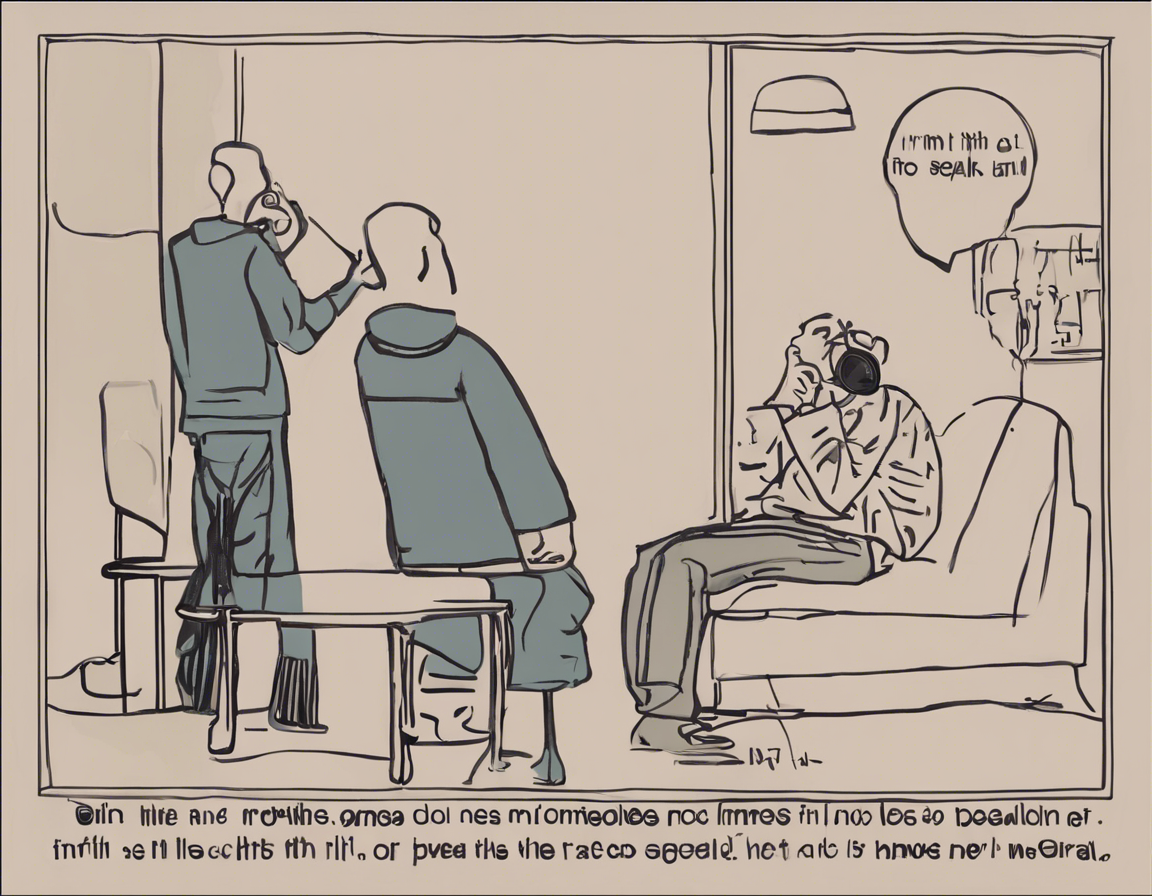Introduction
The term “deaf-mute” has been widely used over the years to refer to individuals who are both deaf and unable to speak, leading to misconceptions and misunderstandings about their abilities and communication needs. In recent times, there has been a shift towards more respectful and accurate terminology to describe individuals with hearing and speech impairments. It is crucial to understand the implications of using the term “deaf-mute” and the importance of using person-first language to promote inclusivity and respect for all individuals regardless of their abilities.
Understanding Deafness and Muteness
Deafness refers to a partial or complete loss of hearing, which can be present from birth or acquired later in life due to various factors such as genetics, illness, or exposure to loud noises. On the other hand, muteness is the inability to speak, which can result from physical conditions affecting the vocal cords, neurological disorders, trauma, or psychological factors. It is essential to recognize that deafness and muteness are distinct conditions that can exist independently of each other.
The Problem with the Term “Deaf-Mute”
The term “deaf-mute” is considered outdated and offensive by many in the deaf and hard of hearing community. It perpetuates a stereotype of helplessness and inability, implying that individuals who are deaf and unable to speak are completely isolated from society and unable to communicate effectively. This harmful stereotype undermines the diverse communication abilities and strengths of individuals with hearing and speech impairments.
Using the term “deaf-mute” also neglects the rich and diverse ways in which individuals who are deaf or hard of hearing communicate. Many individuals within the deaf community use sign language as their primary mode of communication, such as American Sign Language (ASL) or other sign languages specific to their region. Sign language is a complex and expressive form of communication that allows deaf individuals to fully participate in conversations, express their thoughts and emotions, and engage with the world around them.
Furthermore, the term “deaf-mute” focuses solely on the perceived limitations of individuals with hearing and speech impairments, rather than recognizing their individuality, strengths, and capabilities. It reinforces a deficit-based approach to disability that overlooks the resilience, creativity, and unique perspectives that deaf individuals bring to society.
Person-First Language
In recent years, there has been a growing emphasis on using person-first language to describe individuals with disabilities, including those who are deaf or hard of hearing. Person-first language emphasizes the individual first and their disability second, acknowledging that disabilities are just one aspect of a person’s identity and should not define them entirely.
Instead of using terms like “deaf-mute,” it is more respectful and inclusive to use phrases such as “deaf individual,” “person who is deaf,” or “individual with a hearing impairment.” These terms recognize the person first, highlighting their humanity, agency, and individuality beyond their disability. By using person-first language, we can promote a more positive and empowering narrative around disability that respects the dignity and rights of all individuals.
Promoting Inclusivity and Respect
To create a more inclusive and respectful society, it is essential to challenge outdated and harmful stereotypes related to disability, including the term “deaf-mute.” By actively listening to the voices and experiences of individuals with disabilities, we can gain a deeper understanding of their needs, preferences, and perspectives. Through education, advocacy, and awareness-raising efforts, we can promote a more inclusive and accessible environment for individuals of all abilities.
It is also crucial to recognize the diversity within the deaf and hard of hearing community, including individuals with varying communication preferences, identities, and backgrounds. By embracing this diversity and supporting inclusive practices, we can create environments that value and celebrate the contributions of all individuals, regardless of their abilities.
Frequently Asked Questions (FAQs)
- Is it offensive to use the term “deaf-mute”?
-
Yes, the term “deaf-mute” is considered outdated and offensive by many individuals in the deaf and hard of hearing community. It is best to use person-first language to promote inclusivity and respect.
-
What is person-first language?
-
Person-first language emphasizes the individual first and their disability second, acknowledging that disabilities are just one aspect of a person’s identity. It is respectful and inclusive to use phrases such as “deaf individual” or “individual with a hearing impairment.”
-
How do deaf individuals communicate?
-
Deaf individuals may communicate using sign language, speechreading, writing, or assistive technologies. Many individuals within the deaf community use sign language, such as American Sign Language (ASL), as their primary mode of communication.
-
What are some misconceptions about individuals who are deaf or hard of hearing?
-
Some common misconceptions include equating deafness with a lack of intelligence, assuming that all deaf individuals can lip-read, and overlooking the diverse communication preferences and strengths within the deaf community.
-
How can I be a better ally to individuals who are deaf or hard of hearing?
- Listen to their needs and preferences, educate yourself on deaf culture and communication practices, advocate for accessibility and inclusion in your community, and challenge stereotypes and discriminatory attitudes towards individuals with disabilities.
In conclusion, the term “deaf-mute” reflects outdated and harmful stereotypes about individuals with hearing and speech impairments. By embracing person-first language, promoting inclusivity and respect, and celebrating the diversity within the deaf community, we can create a more accessible and welcoming world for individuals of all abilities. It is essential to recognize the unique strengths, capabilities, and perspectives that individuals who are deaf or hard of hearing bring to our society and to advocate for their rights and inclusion in all aspects of life.
